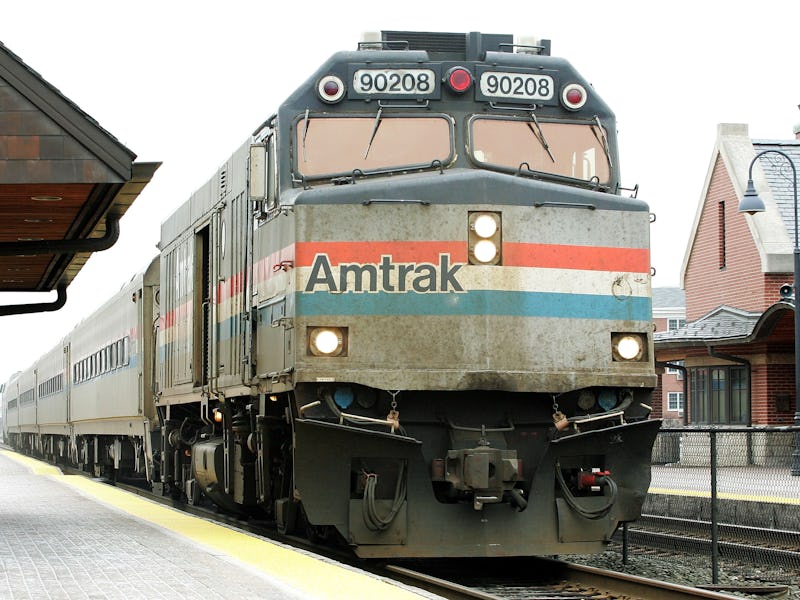President Donald Trump released his 62-page budget on Thursday, setting his financial agenda for the country in writing and letting us all know how he wants to use the $1.1 trillion in taxpayer money that goes toward the discretionary budget each year. In it, the Trump administration has left a few scattered provisions that could have a huge impact on the nation’s transportation infrastructure. While the portion on the Department of Transportation is pretty thin, there are other hints as to the president’s plans for American travel over the next four years hidden in the document.
5. The Department of Transportation’s budget gets cut by 13 percent overall
Trump has allotted $16.2 billion for the DOT’s discretionary budget, which is $2.4 billion less than it was last year.
“The Budget request reflects a streamlined DOT that is focused on performing vital Federal safety oversight functions and investing in nationally and regionally significant transportation infrastructure projects,” the document reads.
The cuts come out of several areas, some of which are broken out below, but as a whole, $16.2 billion is just a mere sliver of the budget. (The Department of Defense gets $639 billion, for reference). Knocking off a full $2.4 billion will force the DOT to do more with less — and since Trump has made big promises to invest in American infrastructure, it remains to be seen how the DOT will manage its money through the changes.
Trump probably wants to get those tacky trains away from his golf courses.
4. The heavily used Amtrak Northeast Corridor to see a bump
Say goodbye to your dreams of the perfect cross-country rail journey. Amtrak is taking cuts overall, but the budget specifically wants to end federal subsidies to the service’s long-distance train lines stating that they have “long been inefficient and incur the vast majority of Amtrak’s operating losses.” Trump’s idea is to force Amtrak to refocus and reinvest in its shorter lines like the Northeast Corridor services and other lines that get money from individual states’ budgets.
Alaska's about to have less air travel than usual.
3. The Essential Air Service is gone, which won’t please Alaskans
Trump’s budget completely eliminates the Essential Air Service, a federal program that’s almost unheard of except by people who directly benefit from it (who, as it happens, are demographically more likely to be Trump voters). The program subsidizes air travel (i.e. makes tickets not prohibitively expensive) to small airports that serve rural communities. Trump expects the cut to save the government up to $175 million, but for the 159 communities served by the program, the loss will likely hit hard. The budget notes that the EAS was set up 40 years ago, and that flights are now rarely full, which are valid points. Many of the rural areas that the EAS serves are now within a not-entirely-unreasonable driving distance from a major airport. But the budget doesn’t note that 44 of the EAS subsidized communities are in Alaska, where remote towns and villages often rely entirely on air travel to bring in supplies and travel to, well, literally anywhere else.
2. Obama’s TIGER Grants are gone
Trump’s budget completely cuts the Transportation Investment Generating Economic Recovery grant program, which it claims will save $499 million each year. Obama set up the TIGER program in 2009, and since then, city and state executives have used them to revitalize or rebuild various infrastructure projects.
“If [TIGER grants] were to be cut, then it’s big time trouble,” Democratic Senator Bill Nelson, the ranking member on the Commerce, Science, and Transportation Committee, told The Hill. “Department of Transportation TIGER grants are something that are considered essential to rehabbing our infrastructure.”
Some Republicans, like Senator Susan Collins from Maine and Trump’s own Transportation Secretary, Elaine Chao also support the bill, but the party as a whole has sought to do away with the grants for the past few years.
1. Air traffic control is going to be run by private companies
This is perhaps the biggest logistical change in Trump’s transportation budget. The plan “initiates a multi-year reauthorization proposal to shift the air traffic control function of the FAA to an independent, non-governmental organization.” The budget implies that one private organization would take control of ATC functions that the FAA normally provides, which Trump has previously indicated would be a non-profit corporation controlled by the major airlines (which are for-profit corporations). Airline executives have been pulling for privatizing the FAA’s ATC functions for years, and said that Trump was “extraordinarily positive” toward the plan during a meeting in November. And now, he’s put his money where his mouth was.
